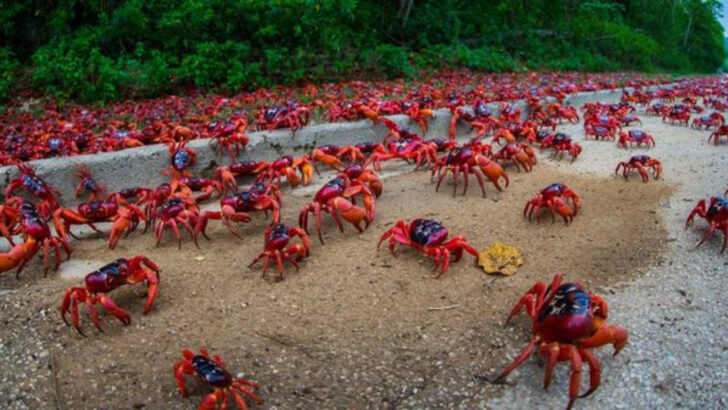Some animals vanish without warning—then reappear thousands of miles away like nothing happened.
We track them by satellite. We tag them, follow them, obsess over them… and still have no idea how they do it. These are the Houdinis of the wild—the creatures whose migrations continue to stump the smartest minds on Earth.
One minute they’re in the Arctic, the next they’ve crossed oceans. Some vanish beneath the waves for months. Others fly through storms, over continents, guided by instincts no human can explain.
These 12 mysterious migrations aren’t just impressive—they’re downright spooky. And the best part? Nature’s not giving up her secrets anytime soon.
Monarch Butterflies
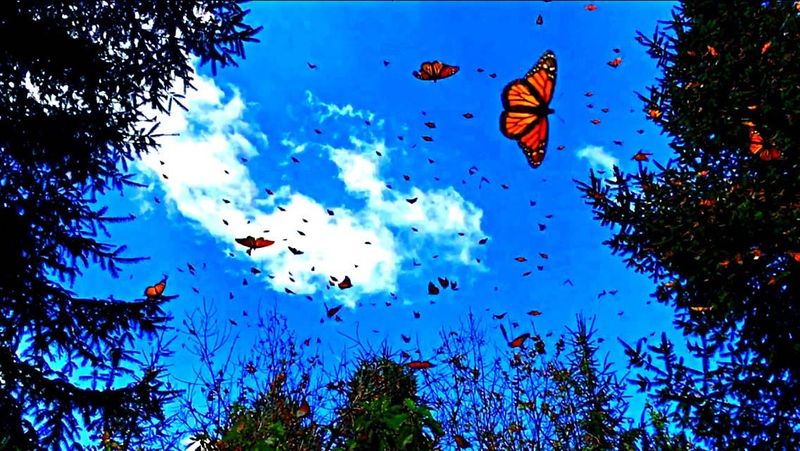
The Monarch butterflies embark on a stunning journey from Canada to Mexico, covering almost 3,000 miles. Each fall, these delicate creatures flutter southward, guided by instincts that remain a mystery. How do they navigate such vast distances with pinpoint accuracy?
Their route spans multiple generations, with offspring picking up the trail left by their predecessors. Despite their fragile appearance, Monarchs are resilient travelers. Theories suggest they might use the Earth’s magnetic field or the sun as a guide.
This migration is not only a spectacle but a marvel of nature, leaving scientists in awe.
Arctic Tern
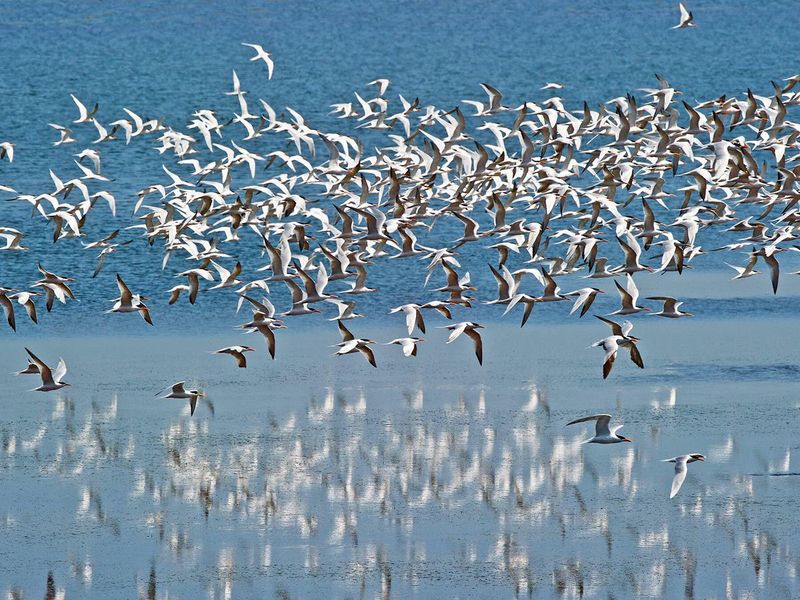
The Arctic Tern holds the record for the longest animal migration, traveling from the Arctic to the Antarctic and back each year. This incredible round trip totals about 44,000 miles.
These elegant birds chase an endless summer, experiencing more daylight than any other creature. Scientists remain perplexed by their ability to navigate such vast oceans and extreme climates.
Their migratory path is a testament to endurance and adaptability, highlighting mysteries of avian navigation. How do they manage such precision without modern tools? Their journey is a wonder of nature’s planning.
Caribou
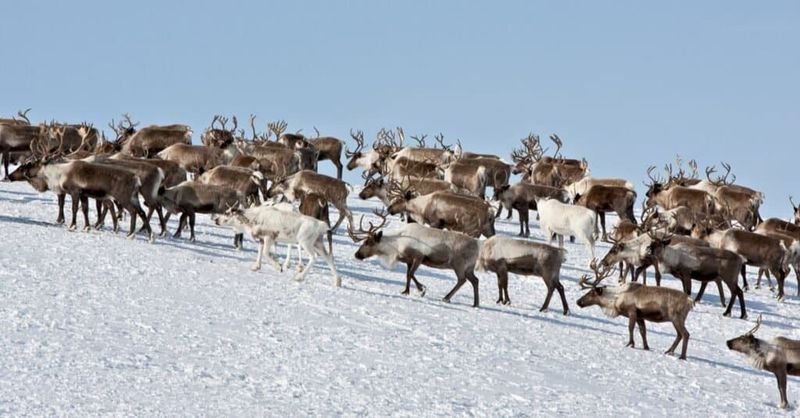
Caribou undertake one of the most grueling land migrations, traversing over 3,000 miles across the Arctic tundra. Their migration is a survival instinct, driven by the need to find food and calving grounds.
These resilient animals face harsh weather conditions, yet they press on, driven by an innate understanding of their environment. What guides them across such unforgiving terrain?
Scientists are still piecing together the puzzle of caribou navigation, suspecting a combination of environmental cues and social learning. Their journey exemplifies perseverance and adaptation against the odds.
Wildebeest
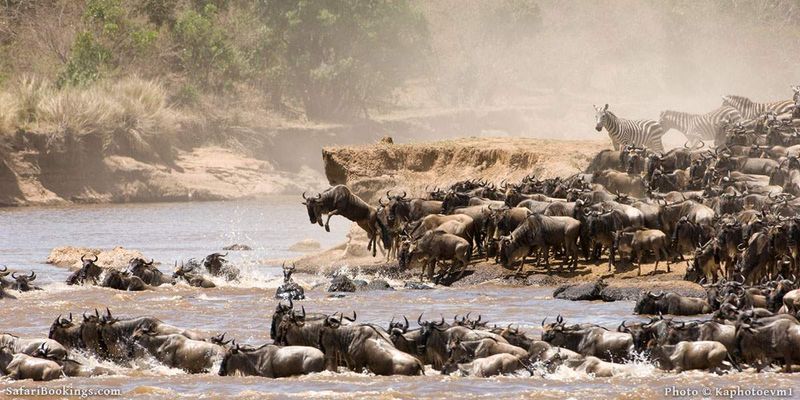
The Great Wildebeest Migration is a spectacular event in the Serengeti, involving over a million wildebeest, zebras, and gazelles. This movement is driven by the search for fresh grazing lands.
The journey spans about 1,200 miles and includes perilous river crossings where predators await. How do these animals synchronize their movements so perfectly?
Researchers are still exploring the mechanisms behind such coordinated migrations. Environmental signals, possibly combined with herd behavior, might hold the key. The migration is a natural wonder, showcasing survival instincts in full force.
Loggerhead Sea Turtles
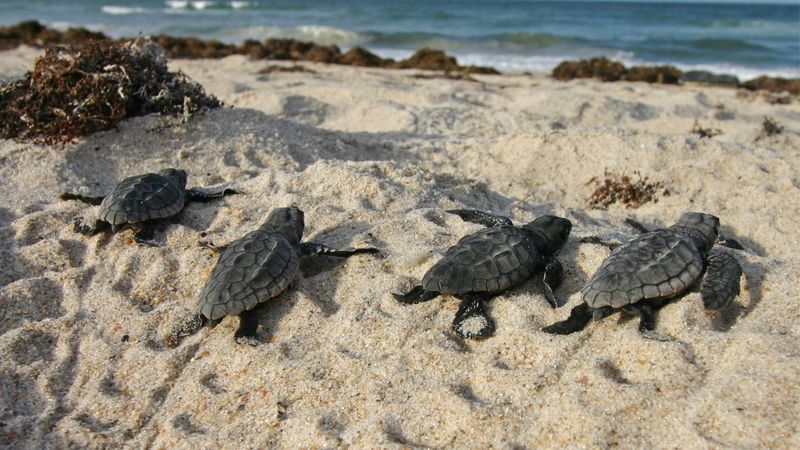
Loggerhead sea turtles travel thousands of miles across the ocean to return to the beaches where they were born. This epic journey is crucial for their reproduction.
Despite advances in technology, the precise methods turtles use to navigate remain elusive. Do they sense the Earth’s magnetic field or rely on ocean currents?
Each turtle’s return to its birthplace is a marvel of instinct and survival. Scientists continue to study these ancient navigators, hoping to unlock secrets of their incredible journeys. This migration underscores the complexity of marine life and its ancient rhythms.
Humpback Whales
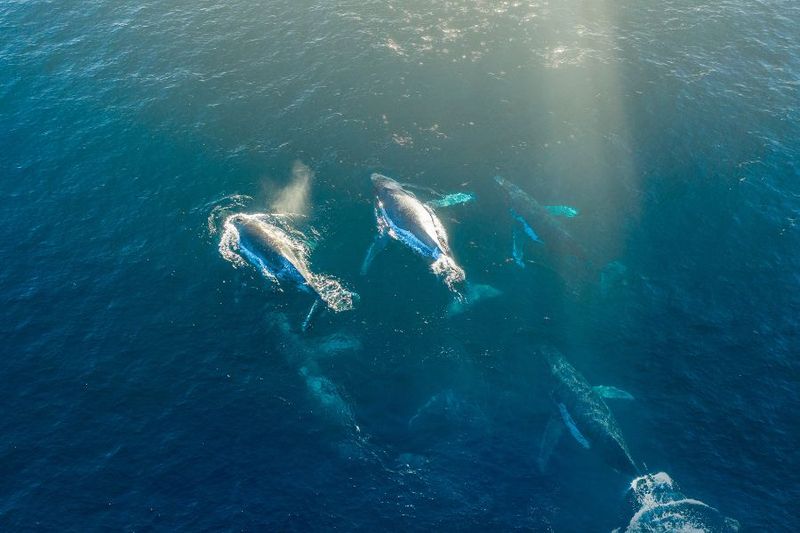
Humpback whales undertake a phenomenal journey, migrating from polar feeding grounds to tropical breeding waters. Their round trip can exceed 5,000 miles, showcasing impressive endurance.
Whales use complex songs and possibly the Earth’s magnetic field to navigate. Their migration is a cycle of feeding and breeding, ensuring species survival.
The exact mechanisms guiding their path remain a mystery. Scientists are enthralled by these majestic creatures and their long-distance travels. Understanding their migration could reveal crucial insights into marine ecosystems and animal navigation.
Red Crabs of Christmas Island
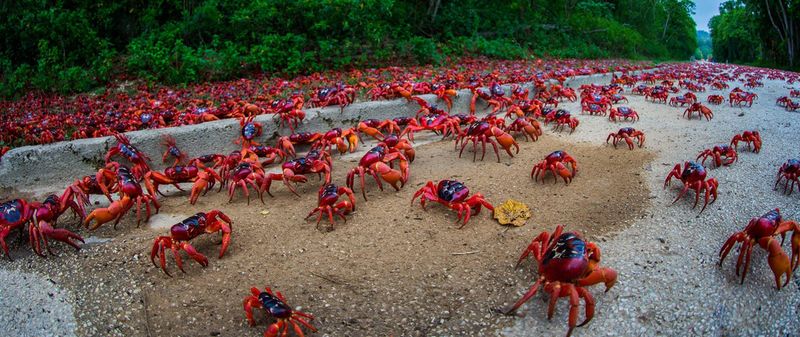
The mass migration of Red Crabs on Christmas Island is one of nature’s marvels. Each year, millions of these crustaceans move from the forest to the coast to breed.
This synchronized journey paints the island red, as crabs traverse roads and paths. How do they coordinate such a precise migration?
Scientists study environmental cues, such as lunar cycles and weather patterns, to understand this phenomenon. The migration is a vivid spectacle, blending ecological mystery with visual grandeur. It remains a striking example of nature’s rhythmic beauty.
Salmon
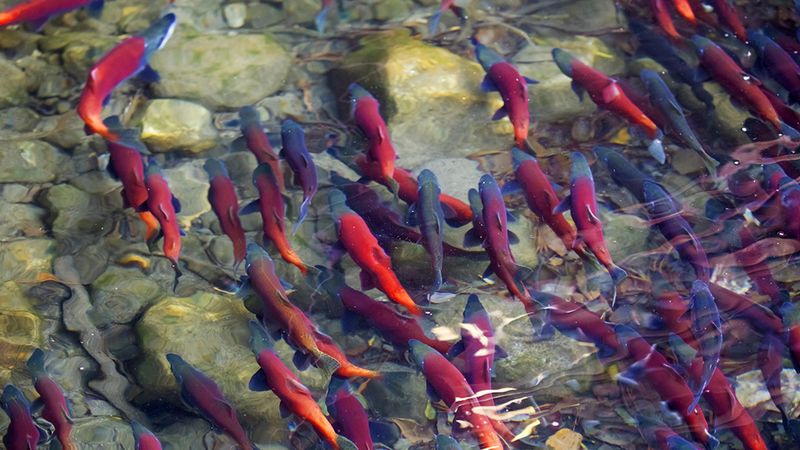
Salmon are renowned for their upstream migration, returning from the ocean to the freshwater streams where they were born. This journey is a demanding and perilous endeavor.
How do salmon find their way back to exact locations after years at sea? Researchers believe they use a combination of olfactory cues and the Earth’s magnetic field.
Their migration is crucial for reproduction and is accompanied by dramatic leaps over obstacles. The journey is a testament to determination and instinct, providing insights into the complexities of aquatic life. Each leap is a step towards regeneration.
European Eels
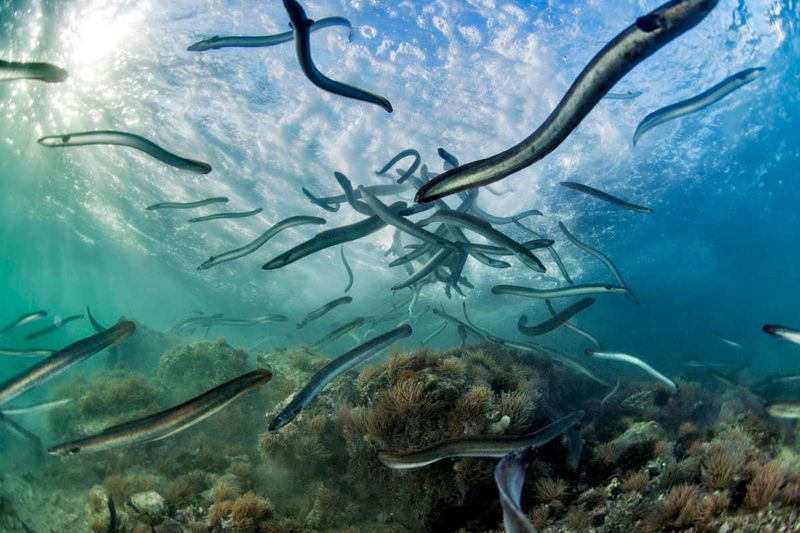
European eels have puzzled scientists with their journey from European rivers to the Sargasso Sea, where they spawn and die. This mysterious migration spans thousands of miles.
The eels’ lifecycle involves transformation from freshwater to saltwater environments, a process that remains partly unexplained. How do they navigate such vast distances and find their spawning ground?
Despite extensive research, many aspects of their migration are still shrouded in mystery. The eels’ journey is a fascinating enigma, offering glimpses into the hidden world of aquatic migration and lifecycle transitions.
Sooty Shearwaters
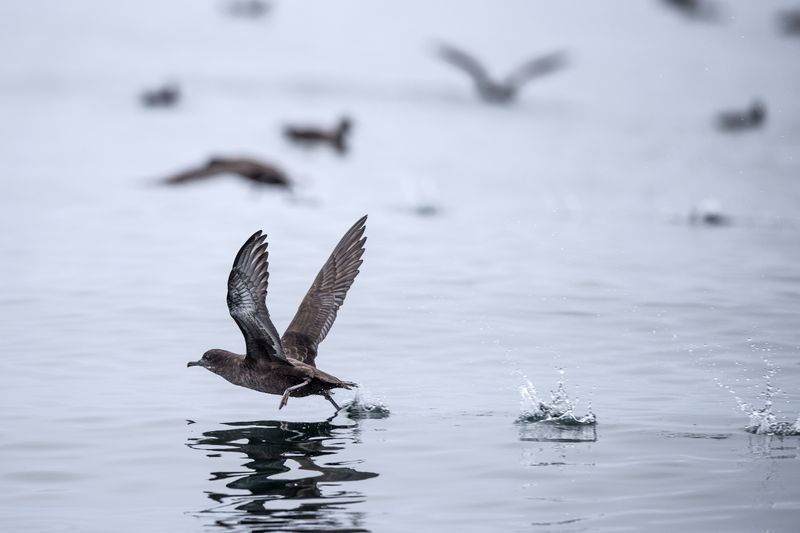
Sooty Shearwaters are renowned for their extensive migration, flying from nesting sites in New Zealand to feeding grounds in the North Pacific. Their journey traverses around 40,000 miles.
These birds follow routes that form a figure-eight pattern over the oceans. What navigational aids do they use to maintain such intricate paths?
Researchers suggest a combination of wind currents and celestial cues might guide them. The migration showcases extraordinary endurance and adaptability, leaving scientists intrigued by their long-distance travel techniques. It’s a remarkable avian journey that challenges our understanding of animal navigation.
Sandhill Cranes
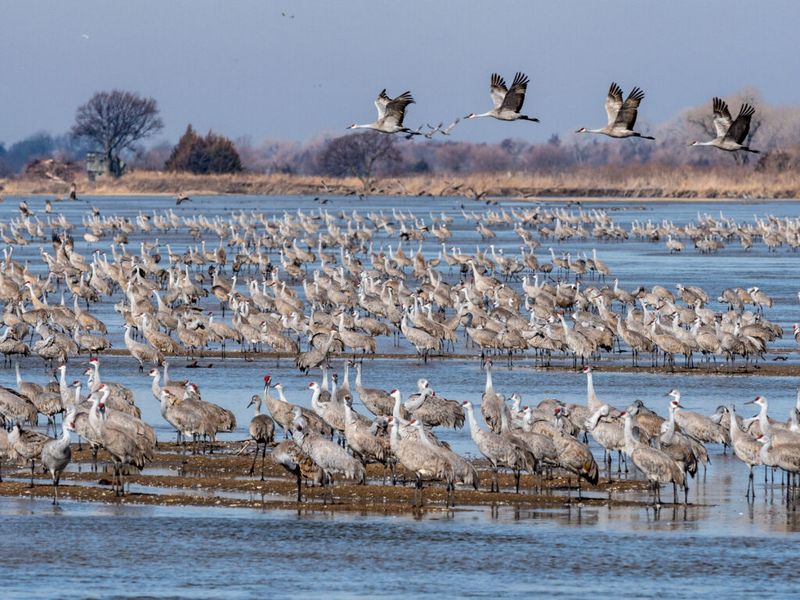
Each year, Sandhill Cranes embark on a long migration from their breeding grounds in the northern United States and Canada to wintering grounds in the southern United States and Mexico.
Their synchronized flights involve complex social structures and communication. How do they manage to stay in formation and navigate accurately?
Scientists study these aspects, exploring the cranes’ ability to use environmental cues and possibly geomagnetic information. Their migration is a symphony of precision and cooperation, a natural phenomenon that continues to captivate and inspire.
Bar-tailed Godwit

The Bar-tailed Godwit astonishes with its non-stop migration from Alaska to New Zealand, covering about 7,000 miles without rest. This feat of endurance is unmatched among birds.
How do these birds sustain themselves during such long flights? Theories suggest they rely on fat reserves and efficient flight patterns.
Scientists are still unraveling the mechanisms that allow for such incredible stamina and navigation skills. This migration is a remarkable display of avian perseverance and adaptation, offering insights into the limits of natural endurance and evolutionary strategies.

